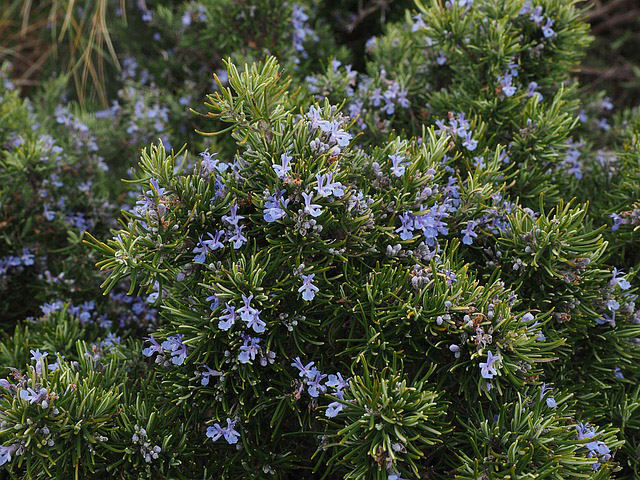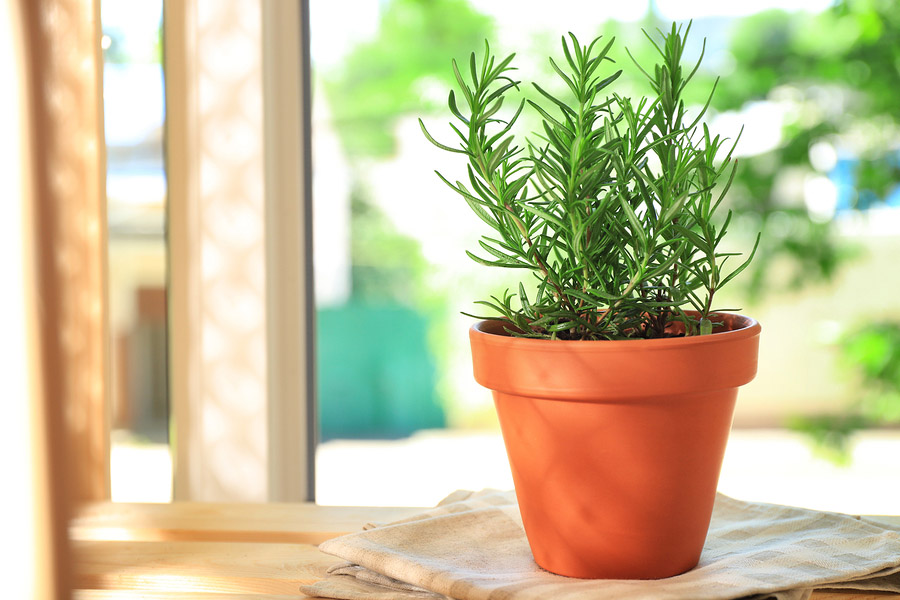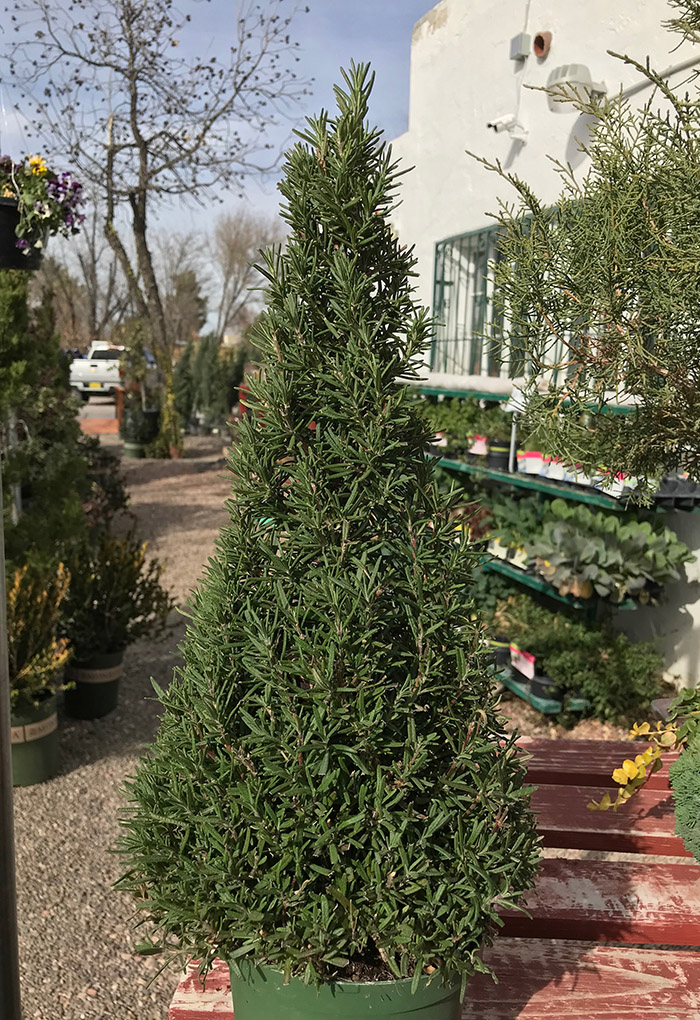Last updated on December 21st, 2024 at 12:24 pm
Rosemary Herb Health Benefits. There are several types of rosemary and all of them provide health benefits. The most common one is Rosmarinus officinalis, commonly called Rosemary. It is an aromatic herb indigenous to the Mediterranean area.
What is Rosemary?
Rosemary is traditionally known as the herb of remembrance and friendship. According to many gardeners once you take a whiff of this plant it will enhance your memory. That is one big benefit if it is really true? Read more here at Verywellmind.com
It goes by many names Mary’s Mantle compass weed, and Romero (Spanish). Rosemary is an intense, sweet-smelling, shrub perennial that does well throughout the Southwest Garden U.S. region.
Do Rosemary Plants Have Flowers?

Yes, they do. As you can see by the image above they have flowers that range from light blue, dark blue and almost purple. They can be grown as annuals in colder climates or put indoors as a potted plant. The blooming season is typically in mid-to-late spring. In the southwest, where temperatures rarely go below 10° it is considered a perennial.
The Rosemary plant has needle-like leaves and is a hardy plant for all regions in the Continental U.S. Mature plants can live for over 30 years and can grow up to 5-6 ft. tall and wide.
Where to Place Rosemary?
Rosemary grows best in full sun but will tolerate semi-shade. The plant grows best in light, with well-drained soil. It’s best to let rosemary become somewhat dry between waterings, as root rot can be a problem when the soil is too wet for too long. It’s also a good idea to mist the leaves once or twice a month during the spring season.
The upright Rosemary will grow to about 4 – 6 feet tall outdoors. Indoors, rosemary benefits by harvesting tip cuttings that will keep the plant fuller and bushier. Rosemary’s leaves are dark green on top with silvery undersides. Rosemary thrives in loose, well-composted-drained, slightly acidic soils. It is somewhat drought tolerant, and water thoroughly the first 3 years after initial planting.
You can use it as a ground cover plant about 5-6 ft. apart for a wonderful ground cover landscape effect.
The Creeping Rosemary

The Creeping rosemary or trailing Rosemary does well in containers, pots, or placed in large rock walls with soil as shown above.
Rosemary is slow to germinate and grown from seed, so it is best to buy seedling plants or propagate rosemary from stem cuttings, yes, it is easy to do. If you are growing this herb indoors, rosemary loves to be moved from outdoors to indoors during the summer season.
Plant Rosemary in Pots and place in the Kitchen

Place them in the kitchen. You’ll have easy access to this herb. Pinch a couple of stems remove the leaves and have it ready for your next meal. You can move it back outdoors when the weather warms up.
More Benefits of Rosemary Herb Plants
They repel plants and give off a pungent smell that repels many insects In the garden. It keeps cabbage moths, bean beetles, and carrot flies at bay. Mosquitoes are also repelled by its strong odor.
Use it in Many Dishes
You can also use it in the kitchen to include many cooking dishes. Here is a good size list.
- Tomato dishes
- Stews
- Soups
- Vegetable dishes
- Pork
- Rabbit
- Sausages
- Fish
- Shellfish
- Finely chopped in custards
- Egg dishes
- Pickles
- Jellies
- Salads
- Herb bread
- biscuits
- Focaccia, the Italian bread
Rosemary is typically used as an herb with lamb, veal, and poultry, especially when simmered with olive oil, garlic, and wine. It should always be used with lamb as it enhances any type of meat, especially chicken.
You can also add it to water to spice up green beans, cauliflower, potatoes, and peas. Use it in marinades for fish and meats as well as minestrone, chicken, and pea soups benefit from the addition of rosemary. Rosemary does have a strong flavor so use sparingly.
The whole plant is edible from the leaves, stems, and flowers are all edible. You can also release the flavor of dried leaves by crushing them just before using. Another good idea is to use the stems can be used for herb skewers by stripping the leaves and threading vegetables or tender cuts of meat on the stems for broiling or even on the grill.

You can keep Rosemary in the fridge for a few days either in plastic bags or with the stems immersed in water. The leaves can be dried by hanging fresh sprigs in a warm, dry place. Strip off leaves before storing.
Rosemary for Landscaping Purposes
Plant them in rows for a great-looking hedge. They are easy to trim and can also be used as a stand-alone plant.

Use it as a Christmas Tree during the holidays.

Problems with Rosemary Plants
Spittlebugs and mites will attack this plant. Spittlebug is an insect that sucks the juice from plants and makes a substance that looks like… well, spit. It hides and protects itself inside this foamy spittle substance.
It’s best to use an organic solution to remove these insects. Using a spray insecticide will get rid of this unsightly insect. However, it is best to use insecticidal soap as your organic choice. It will also help kill mites and other insects. Neem oil is another good alternative.
USDA Hardiness zone for Rosemary is 8-10.
Rosemary Herb Health Benefits

Greenhouse Manager, Master Gardener, and Webmaster.
If you have any questions or enjoyed this post, feel free to share your thoughts in the comments below.


